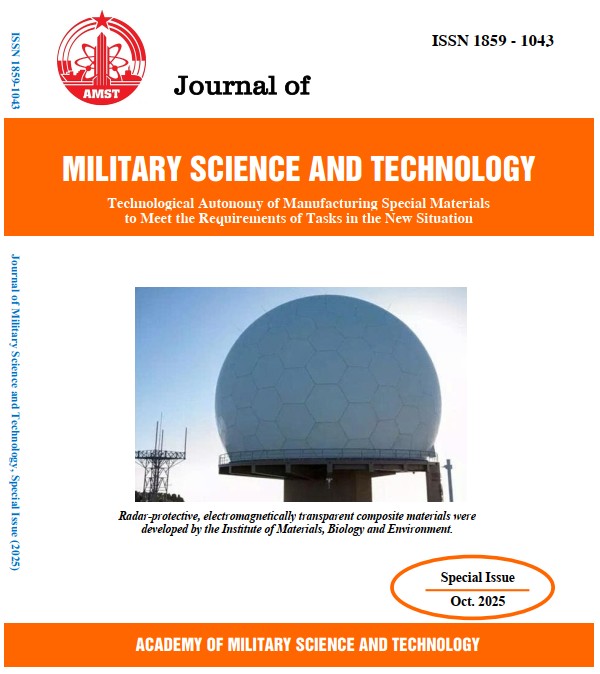Study on the influence of compositional and technological factors on the physicomechanical and combustion properties of Nitrocellulose–Cellulose–Trinitrotoluene materials
107 viewsDOI:
https://doi.org/10.54939/1859-1043.j.mst.IMBE.2025.29-35Keywords:
Nitrocellulose; Nitrocellulose-Cellulose-Trinitrotoluene; Compositional and technological factors; Physico-mechanical and combustion properties.Abstract
This paper presents the results of evaluating the influence of several factors, such as composition and manufacturing technology, on the physicochemical and combustion properties of Nitrocellulose–Cellulose–Trinitrotoluene (NC-C-TNT) materials. The findings demonstrate a pronounced effect of trinitrotoluene (TNT) content on the properties of Nitrocellulose–Cellulose (NC–C) sheets produced by the papermaking method. Increasing the amount of TNT impregnated into the NC-C sheets significantly improves the mechanical properties of the system, while also enhancing parameters such as heat of combustion, propellant force, and burning rate coefficient. However, when TNT is impregnated into NC–C sheets formed by bonding two layers of material using nitrocellulose adhesive in acetone, the aforementioned effects are not observed. The influence of technological parameters such as pressing pressure, pressing time, and pressing temperature on the properties of the material was also investigated. The results showed that these processing parameters exert a significant impact on the mechanical characteristics of the material.
References
[1]. F. W. Robbin and J. W. Colburn, "Combustible cartridge case: Current status and future prospects," Technical Report, Ballistic Research Laboratory, Aberdeen Proving Ground, Maryland, (1992). DOI: https://doi.org/10.21236/ADA254636
[2]. G. R. Kurulkar, R. K. Syal, and Haridwar Singh, "Combustible cartridge case formulation and evaluation," Journal of Energetic Materials, 14(2), pp. 127–149, (1996), doi: 10.1080/07370659608216061. DOI: https://doi.org/10.1080/07370659608216061
[3]. W.-t. Yang, J.-x. Yang, Y.-c. Zhang, and S.-j. Ying, "A comparative study of combustible cartridge case materials," Defense Technology, (2017), doi: 10.1016/j.dt.2017.02.003. DOI: https://doi.org/10.12783/ballistics2017/16855
[4]. А. Н. Крестовский, "Разработка олигоэфируретанакрилатного сгораемого материала и технологии изготовления нового поколения жестких сгораемых картузов для модульных метательных зарядов," FSUE Research Institute of Polymeric Materials, Perm, (2011).
[5]. P. L. DeLuca, "Cartridge case and method for the manufacture thereof," Patent US 3,320,886, (1967).
[6]. J. Fleming, "Combustible Cartridge Cases: a review of the properties, technology, and applications", (2023).







